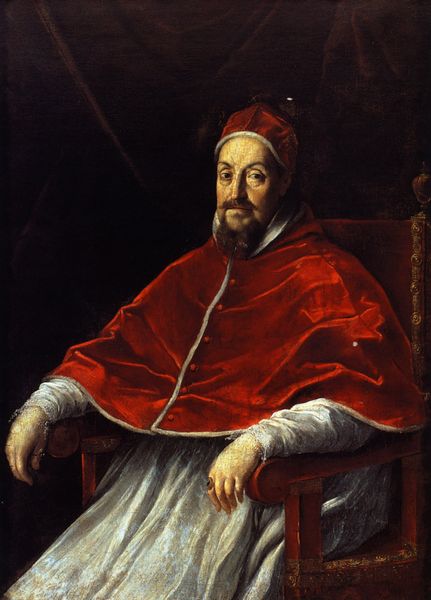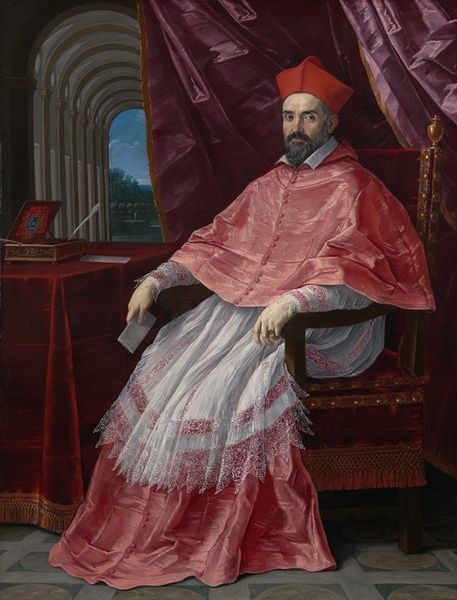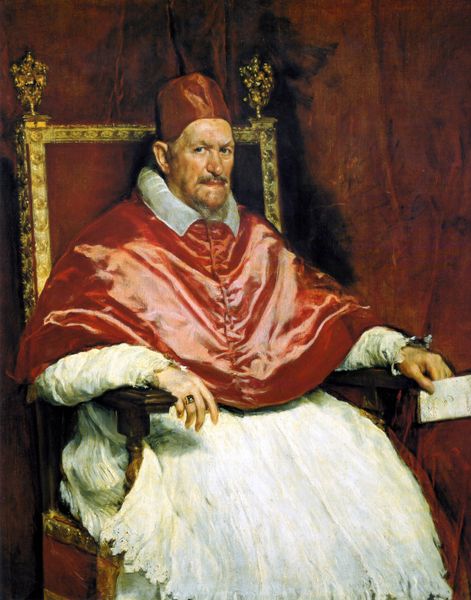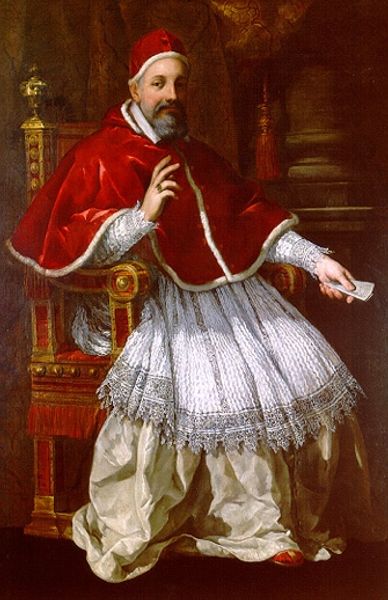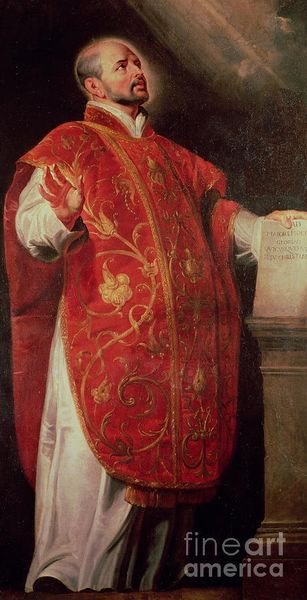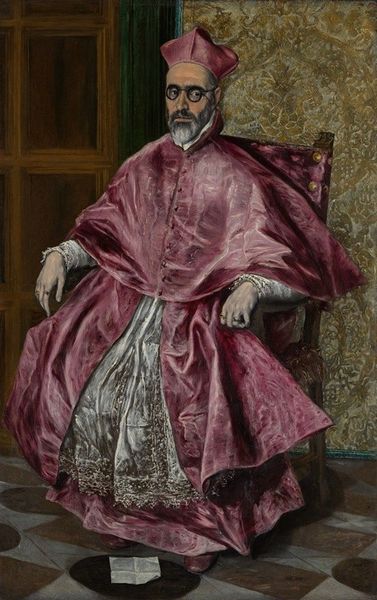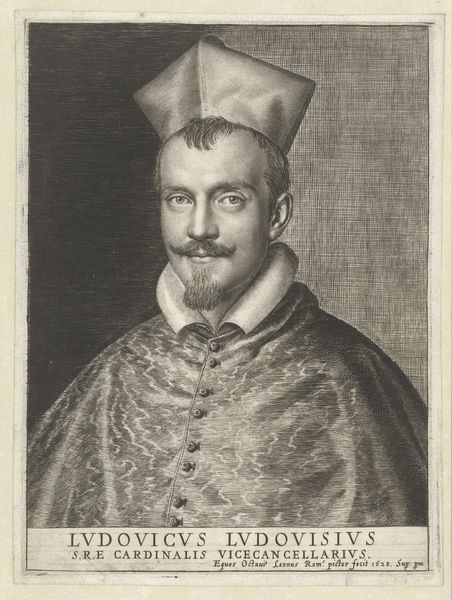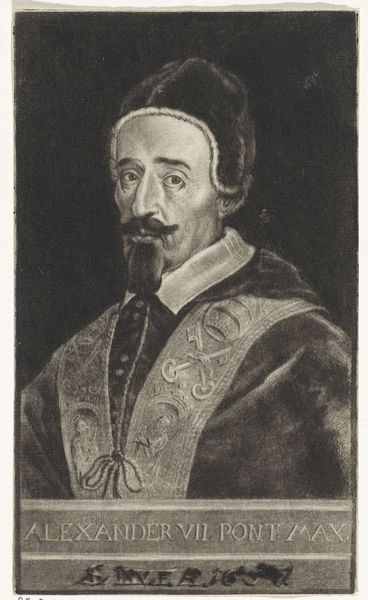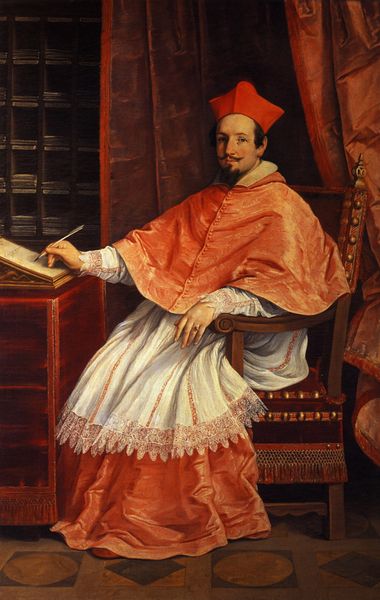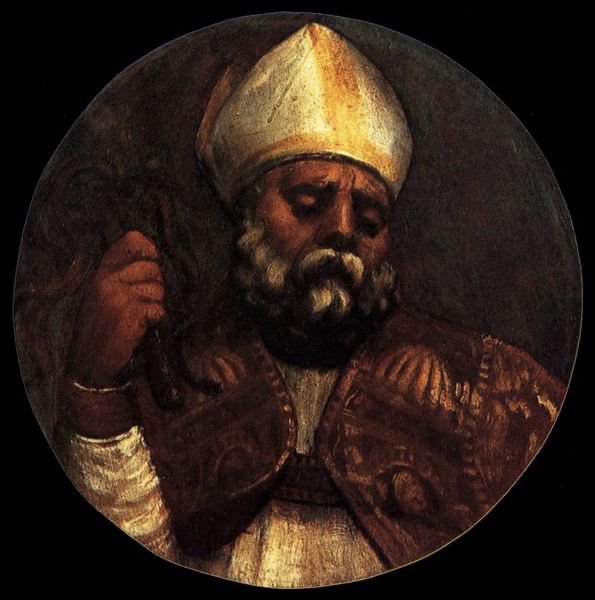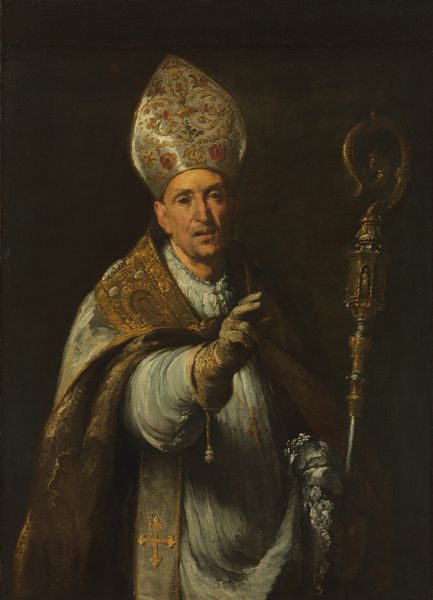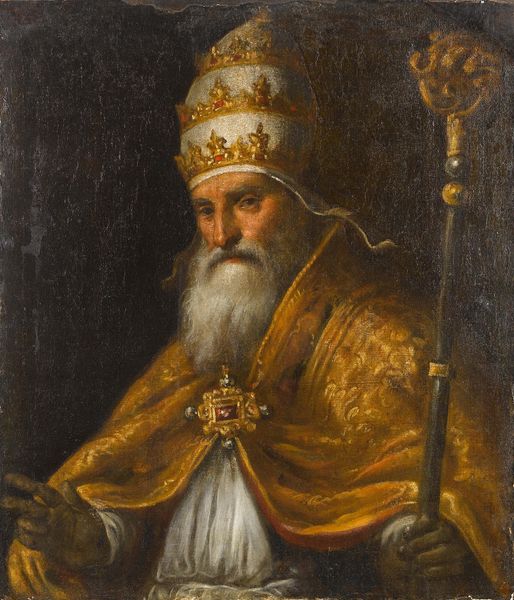
oil-paint
#
portrait
#
baroque
#
oil-paint
#
oil painting
#
history-painting
#
academic-art
Copyright: Public domain
Curator: Look at this impressive oil painting—a portrait of Pope Alexander VII, believed to be by Giovanni Battista Gaulli. The artist really captured the gravitas and splendor associated with such a powerful figure. Editor: Splendor is definitely the word! All that red – the velvet cape, the cap. It projects authority and strength but it also feels kind of… heavy? Claustrophobic, even. Curator: The color choice is definitely deliberate, it’s deeply ingrained in the iconography of the Catholic Church. Red represents the blood of Christ, sacrifice, passion, spiritual power, all cornerstones of papal imagery, creating an immediate association with his sacred role. Editor: Of course, it’s strategic in reinforcing his authority and the perceived continuity of papal power across history. It's a costume as much as a statement of faith, framing the Pope as the living embodiment of the Church itself. And look at his hand gesture. Is that a blessing, or more like a command? Curator: Both perhaps. The hand raised in a gesture of blessing is a potent symbol of papal authority, a direct link to the divine, while that precise positioning projects calculated authority and reinforces the expectation of obedience. The documents in front of him suggests that worldly issues also rest in his hand, law and power converge into a singular presence. Editor: It is really an elaborate performance isn't it? I keep wondering about the artist, Gaulli. What political maneuverings or pressures would he have navigated to secure such a commission, knowing the stakes involved in portraying such an iconic figure? Curator: Certainly his work had political consequences. And it is through those public images that political actors, the pope in this case, could cement their power and leave a visual trace for posterity. These portraits are a legacy project. Editor: I can see it. He becomes more than just a man; he becomes a symbol, meticulously constructed for audiences then and now. Thinking about it all really gives a chilling new understanding of the saying "heavy is the head that wears the crown". Curator: I agree. And it’s intriguing to dissect the language of symbols to see the confluence of both sacred tradition and deliberate, very human power-brokering. Editor: Absolutely, I'm off to research Alexander VII's most ambitious building projects; after all, brick and mortar also perform on a grand scale.
Comments
No comments
Be the first to comment and join the conversation on the ultimate creative platform.
